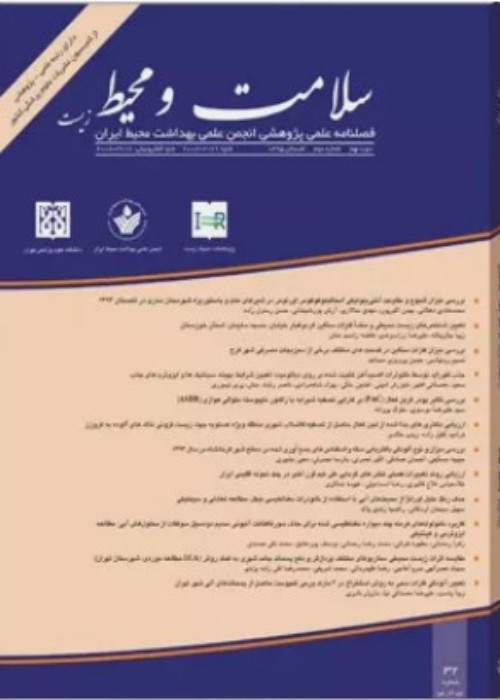Environmental assessment of vehicle lubricants by life cycle assessment approach
Author(s):
Abstract:
Background and Objective
Today pollutants related to refineries and base oil products have caused many concerns about environment. Among these, the share of lubricants as one of the oil products is undeniable for causing environmental problems, harmful pollutants for men and global warming. Recently LCA as a beneficial tool is provided for finding solution to the environmental problems. The aim of this study was to evaluate and compare environmental impacts of lubricants and its ingredients (oil based and additives). Additionally, it was attempted to identify the pollutants caused by the lubricants in order to replace them by environmentally friendly components.
Materials and Methods
In this study, the system boundary was first identified and then the life cycle assessment steps were carried out for vehicle lubricants. Finally, the results were analyzed using SimaPro software based on the Eco Indicator 95.
Results
Results showed that although additives made up about 20 percent of the lubricants, more than 80 percent of the environmental pollutants were related to them. These materials have a significant impact on greenhouse gas emission and global warming as 91% of CO2 emission (7.81kg) of lubricants is related to the additives. Also, these materials emit 0.00913 kg C2H4 and 0.0368 kg SPM, which can make summer and winter smog. The car lubricants cause heavy metals (3.95×10-5 kg Pb) to be released into water and release of carcinogenic substances (4.2×10-6 kg B(a)P), which a very low percentage of it is allocated to base oil.
Conclusion
The most important environmental pollution of vehicle lubricants was caused by the additives. Since the percentage of each additive to lubricants includes antioxidant (40%), antiwear (23%), detergents (20%) and viscosity modifier (17%), thus, the company must seek to change these types of additives and replace them with the components with lower environmental impact in their production cycles.Keywords:
Language:
Persian
Published:
Iranian Journal of Health and Environment, Volume:11 Issue: 4, 2019
Pages:
547 to 562
magiran.com/p1944372
دانلود و مطالعه متن این مقاله با یکی از روشهای زیر امکان پذیر است:
اشتراک شخصی
با عضویت و پرداخت آنلاین حق اشتراک یکساله به مبلغ 1,390,000ريال میتوانید 70 عنوان مطلب دانلود کنید!
اشتراک سازمانی
به کتابخانه دانشگاه یا محل کار خود پیشنهاد کنید تا اشتراک سازمانی این پایگاه را برای دسترسی نامحدود همه کاربران به متن مطالب تهیه نمایند!
توجه!
- حق عضویت دریافتی صرف حمایت از نشریات عضو و نگهداری، تکمیل و توسعه مگیران میشود.
- پرداخت حق اشتراک و دانلود مقالات اجازه بازنشر آن در سایر رسانههای چاپی و دیجیتال را به کاربر نمیدهد.
دسترسی سراسری کاربران دانشگاه پیام نور!
اعضای هیئت علمی و دانشجویان دانشگاه پیام نور در سراسر کشور، در صورت ثبت نام با ایمیل دانشگاهی، تا پایان فروردین ماه 1403 به مقالات سایت دسترسی خواهند داشت!
In order to view content subscription is required
Personal subscription
Subscribe magiran.com for 70 € euros via PayPal and download 70 articles during a year.
Organization subscription
Please contact us to subscribe your university or library for unlimited access!


